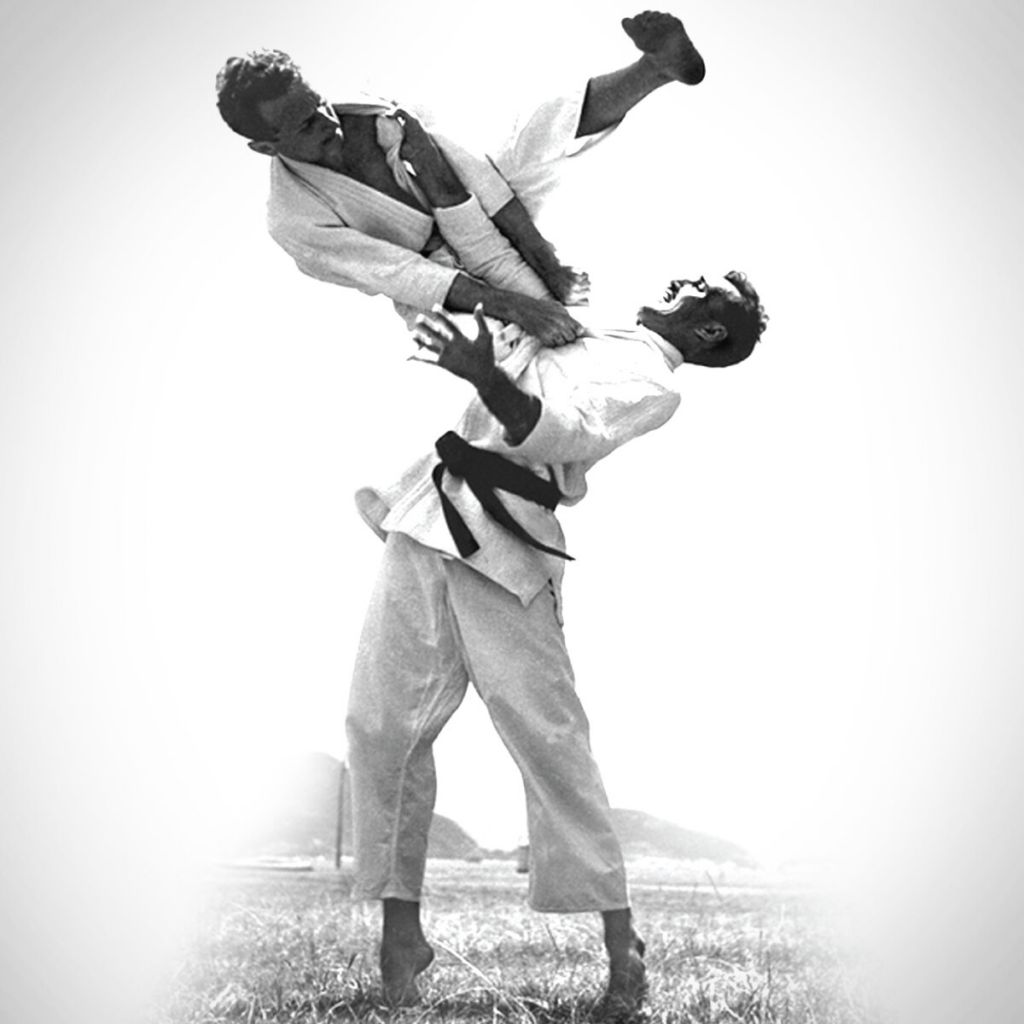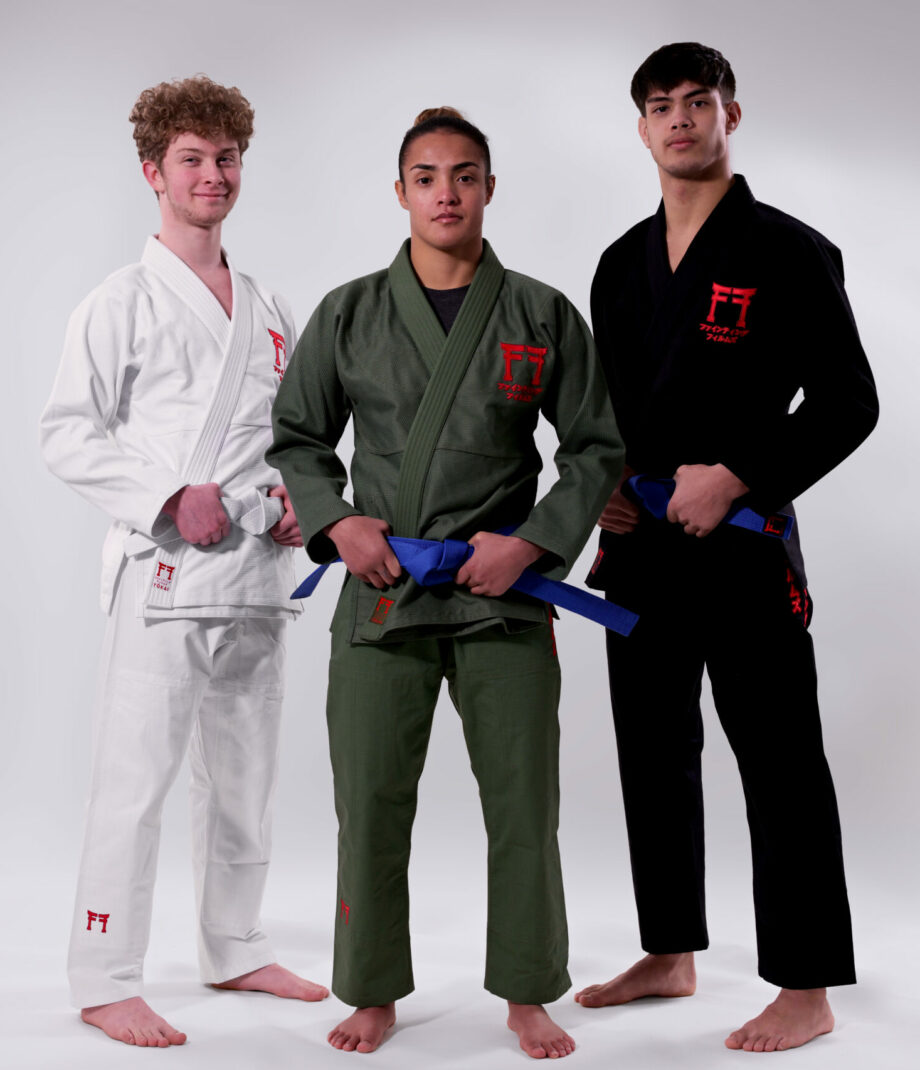Brazilian Jiu-Jitsu (JJB) is now one of the world’s most popular martial arts, thanks in no small part to its influence on MMA. But how did this sport, a cousin of judo, come into being? Let’s delve into the history of Brazilian jiu-jitsu, from its Japanese roots to its development in Brazil and worldwide expansion in recent years.
The Japanese Origins of JJB
JuJitsu has its origins in Japan, where it was practiced by samurai as a form of hand-to-hand combat. Faced with armed or armored opponents, samurai would use techniques of projection, immobilization and submission to gain the upper hand. This discipline gradually evolved into several styles, including Judo, which was codified by Jigoro Kano at the end of the 19th century.
Judo founder Jigoro Kano modernized and structured these fighting techniques into a system more focused on flexibility and efficiency, giving birth to Kodokan Judo. He trained several experts, including Mitsuyo Maeda, who specialized in ne-waza (ground techniques).
Mitsuyo Maeda, a master judoka and expert in ground fighting, traveled the world to demonstrate the effectiveness of his martial art. In 1914, he settled in Brazil, where he began teaching his fighting techniques. It was here that he met Gastão Gracie, an influential businessman, whose son Carlos Gracie would become one of his most famous students. This meeting marked the beginning of a revolution in the world of martial arts. Thus began the history of Brazilian jiu-jitsu.
The Birth of Brazilian Jiu-Jitsu
Carlos Gracie, one of Maeda’s first students, quickly understood the potential of Ju-Jitsu and adapted it, emphasizing submission and ground fighting techniques. Together with his brother Hélio Gracie, they developed a more effective system for smaller or less physically powerful people, giving birth to Brazilian Jiu-Jitsu.

The Gracies then organized open challenges against fighters of different styles (luta livre, boxing, karate), highlighting the effectiveness of JJB. This martial art, a cousin of judo, developed on the other side of the ocean thanks to Japanese influence.
The Gracies also implemented a rigorous training methodology, favoring practice in real-life situations. They organized open challenges called “Desafios Gracie”, where they faced fighters from other disciplines such as luta livre, boxing, karate or capoeira. The aim of these challenges was to prove the effectiveness of Brazilian Jiu-Jitsu and popularize the discipline.
JJB is a sport very similar to judo, in terms of techniques, objectives and clothing. Practitioners wear a Gi (judogi in judo), a simple, codified garment that has evolved over time.
JJB kimonos developed in the same way as Brazilian kimonos, with a freer, less codified look and following the same rules as in Japan. The gis took on different colors, different patterns, different fabrics…
Over the years, the Gracie family trained numerous students and opened academies throughout Brazil. This gradual spread has enabled JJB to gain notoriety and become an essential reference in the world of martial arts.
JJB Today: A World Sport
Today, JJB is practised the world over. It has become a sport in its own right, with international federations, prestigious competitions such as theIBJJF World Championship and the ADCC, and an ever-growing community of practitioners.
JJB has also influenced many other combat sports and is considered an essential skill for MMA fighters. The sport was legalized in France 5 years ago, thanks to the involvement of former judoka Bertrand Amoussou, who recounts his fight for its legalization in his book Hors de la cage.
Hors de la cage
“Hors de la Cage” retrace le combat acharné de Bertrand Amoussou pour légaliser le MMA en France. Ce livre plonge au cœur d’une bataille institutionnelle de 16 ans, marquée par des défis, des préjugés et un engagement sans faille. À travers son récit, l’auteur dévoile les coulisses de la reconnaissance de ce sport, transformé de discipline controversée en une pratique respectée. Un témoignage inspirant de persévérance et de passion pour les arts martiaux. SORTIE OFFICIELLE LE 19 MARS
The history of Brazilian Jiu-Jitsu is one of constant evolution, adaptation to the realities of combat and worldwide expansion. If you want to learn JJB or perfect your practice, it’s essential to have the right equipment.




